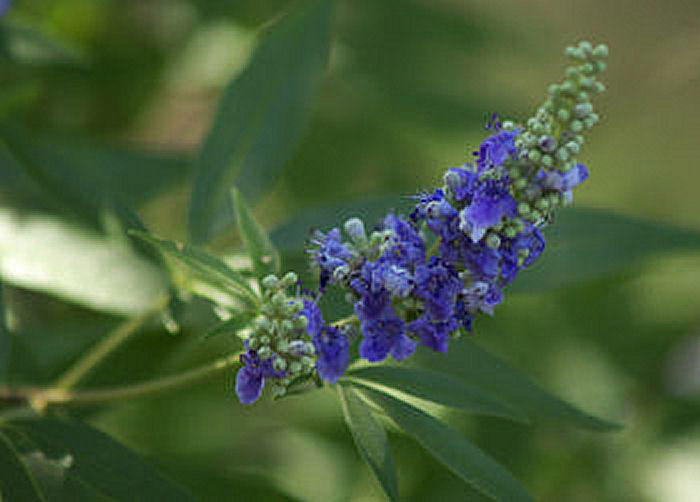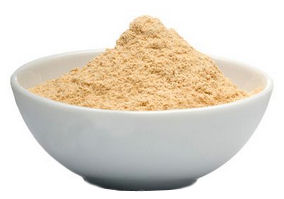Signs and Symptoms of Menopause
Menopause is widely known as the permanent physiologic end of menstrual cycles as a result of declining ovarian functions. During this period, the reproductive function progressively diminishes and ends. Women often find that menopause causes a significant change in their life, since it marks the end of their ability to bear children and other physical changes. This role change can be very dramatic and stressful to many women.
Due to hormonal changes, women may observe irregular menstruation, breast tenderness, and mood changes long before menopause occurs. The hot or warm flushes and night sweats reported by some women are thought to be the result of hormonal changes and indicate vasomotor instability (changes in the diameter of blood vessels). They may vary in greatness from a barely noticeable warm feeling to a feeling of extreme warmth accompanied by copious sweating, causing discomfort, insomnia and fatigue, and occasionally, embarrassment. Other physical changes may include bone loss known as osteoporosis.
Causes of Menopause
The postmenopausal period is the time of life after menopause, beginning from about one year after menses stop. Perimenopause is the period extending from the first signs of menopause - usually hot flashes, vaginal dryness, or irregular menses - to beyond the complete end of menses. The age range at which menopause occurs is wide, between approximately 40 to 55 years. It is said that both the age of menarche (a woman's first period) and the age of menopause are familial. This means that if menarche occurred early in a mother, it will probably occur early in her daughter, and if menopause starts early in a mother, it may start early in her daughter. The earlier the age of menarche, the earlier menopause tends to occur.
- Irregular Periods. Because of the wide hormonal changes that occur during your menopause, it may result to irregular periods before your periods stop altogether. During this time, your menstrual flow will be lighter or heavier than usual. The intervals between your periods will be shorter or longer. Moreover, you may experience spotting between your periods. In some cases, women have regular periods until their periods stop suddenly, and others have irregular periods for a long time until menopause occurs.
- Birth Control. Although you may be less fertile during the years just before the start of menopause, chances are you still continue to release eggs (ovulate) and you may become pregnant. If you wish not to become pregnant, it is advised that you continue to use birth control until the physician validates that you have reached menopause already or until you have not had a menstrual period for almost 12 months.
- Hot flashes. These are sudden periods of intense heat, sweating, and flushing. A hot flush usually begins in the chest and spreads out to the neck, face, and arms. 75-80% of women who are going through menopause will experience hot flashes. Hot flushes may occur as often as once an hour and can last from a few minutes to an hour. They may disrupt your sleep patterns during bed time. An interrupted sleep can lead to insomnia, fatigue, irritability, or inability to concentrate. Hot flashes usually stop within 1 or 2 years but may persist for several years. They are rarely noticed by others.
- Vaginal changes. Vaginal changes that occur during menopausal period include vaginal dryness which is caused by the loss of lubrication and moisture in the vagina; thinning of the vaginal walls and loss of elasticity in them. There is also shrinkage of the outer lips (labia) of the vagina. During sexual intercourse, these vaginal changes can lead to soreness and may also increase your risk for vaginal infections and urinary incontinence.
- Mood changes. The hormonal and physical changes of menopause can cause mood changes. Symptoms such as nervousness, lack of energy, insomnia, moodiness, or depression are common during this time.
Managing Menopause Symptoms
Irregular periods
Keep a written record of your periods in case you need to discuss them with a health professional.
Hot Flashes
Hot flashes usually improve after 1 to 2 years. In the meantime:
- Keep your home and workplace cool, or use a fan. Try carrying a hand fan with you. A fan can give you a relief when your internal thermometer goes high. You can also purchase a personal battery-powered electric fan which comes in several models and gives off a stream of cooling air so that only you can feel it.
- Wear layers of loose clothing that can be easily removed. Wear natural fibres such as cotton and silk. The most efficient way to cope with hot flashes is to dress properly. In general, layers of loose clothing, such as blouses that button down the front, are better than turtlenecks, which can leave you trapped in a flash. If you plan your wardrobe right, you can use your layers to control your body temperature like a thermostat by taking off those layers when it gets too hot and by putting more of it when it gets too cold.
- Drinking cold beverages are better rather than hot ones. Also limit your intake of caffeine and alcohol. Alcohol, nicotine, spicy foods, caffeine, fatty foods, and chocolate can be a triggering factor for hot flashes. Individual triggers may also include certain kinds of cheese or certain flavorings.
- Relaxing is probably the most important coping technique for hot flashes. When dealing with hot flashes, try to keep the whole thing in your own point of view. When possible, getting up, moving around, shedding that extra layer of clothing, or taking a cold drink of water will break the cycle of flushing. Don't be panicked, instead, take all the time you need to suit your self and feel more comfortable even if it is a little disturbing. You can practice relaxation techniques such as yoga.
- Eating smaller, more frequent meals can help avoid the heat generated by your body in digesting large particles of food.
- Foods rich in Vitamin B6 and Vitamin E are found to be effective in decreasing hot flashes.
Vaginal dryness
Use a water-soluble vaginal lubricant to relieve pain and discomfort during sexual intercourse. Vegetable oil will also work as well. Do not use Vaseline or other petroleum-based products.
Mood changes
The best thing you can do for yourself is realize that you are not alone. Tension and anxiety may make your symptoms worse. Discuss your symptoms with other women. Give yourself, and ask others for, abundant amounts of love, caring, and understanding. Try to develop a relaxed attitude regarding menopause. Relieve stress by exercising on a regular basis. Hormonal therapy may improve hot flashes, vaginal dryness, and mood changes, in addition to protecting you from osteoporosis. But also take note of the side effects and risks it can cause you.
Nutrition
Women are encouraged to decrease their fat and caloric intake and increase their intake of whole grains, fiber, fruit, and vegetables. Women of all ages tend to ingest less than the recommended amount of calcium. Thus, they should be encouraged to increase their intake of foods high in calcium (e.g., nonfat yogurt, green leafy vegetables, seafood, and calcium-fortified foods).
Home Remedies and Natural Treatments for Menopause
Chasteberry
The chasteberry (also known as Agnus Castus) has been used for centuries as a tonic for general female health. It is found to nourish the pituitary gland which is the control centre for balancing hormonal activity. In particular, chasteberry has been found to treat menopause symptoms such as night sweats, hot flashes and fatigue. A common suggestion is to take 20 to 40 mg of chasteberry extract once per day.
Black Cohosh
Black Cohosh root is one of the most widely used and studied natural alternatives to Hormone Replacement Therapy (HRT). Standardised extracts of of this root have been shown to produce better results in relieving hot flashes, vaginal thinning and dryness, depression, and anxiety when compared to standard HRT. A common recommended daily intake of black cohosh for menopause treatment is 20mg per day.
Soy
Recent studies show that soy contains a substance called phytoestrogens, which are weak, estrogen-like plant-based compounds. These phytoestrogens are more popularly known as isoflavones. These soy isoflavones have been shown to ease menopausal symptoms in thousands of women. To ensure you are getting adequate amounts of soy in your diet, it is suggested that a woman aim for 50-100 mg of soy per day. This translates to two cups of soy milk (35-40 mg in one glass), a half cup of edamame (baby soybeans in a pod), or one cup of tofu (35 mg). Just be sure to always choose organic soy products, as soy is one of the two most common genetically modified crops in the United States.



Hello, I also got my Flashfighters from Holland and Barret and have been trying to find everywhere to purchase them.
It's been great reading all the comments here and I've just ordered my Flashfighters. I'm done fighting and putting up with this menopause misery!
I have just been recommended the flash fighters but was too late to get them from Holland and Barratt, so have just received then from Puritan. Only took 5 days to receive. Can anyone tell me how long it will be before I see results? Am I looking at days or months? Any advice?
Hi i have just startead taking flashfighters .As like one person has said could i take 3 tablets at a time as i tend ti forget to take them at diffrant times of the day
I Was taking flashfighters from Holland and Barrett and found them brilliant. They have since discontinued them , I have now found them on a website Puritan United Kingdom so hopefully they are exactly the same
I used Flash Fighters from Holland and Barratt and they worked brilliantly, no more hot flushes, no more strange feelings in my stomach prior to the flush, I was able to sleep throughout the night and then they took them off the shelves and immediately all the symptoms returned. I've tried Flash Fighters from Puritan's Pride and although they basically have the same ingredients, they don't work so well for me and I'm struggling. Hope H & B restock their Flash Fighters.
I used flash fighters until H&B stopped selling them!
Now i am in a right state: I yo-yo between upset tummy/constipation, hot flushes, feel exhausted all the time, headaches, keep needing to go to the loo very frequently and more besides.
I have ordered mine from Puritans Pride and they are cheaper than H&B! Just the delivery time is sooo slow..
cant wait for them to arrive!
to all you flash fighter fans....how could H&B do it to us...i got my flash fighter from a web site called puritan's pride,they have offers on orders but be aware that altho it is a british based web site sometimes your products may come from further afield there for there will be a shipping charge and a customs fee this end if the uk warehouse is out of stock...but all in all i think that even with the charges i got a better deal......your loss H&B
Re Flash Fighters; I have also been using this product and have found it has 'calmed down' my irregular hormones where other supplements have failed. I went into H&B yesterday and was told that they have been recalled due to incorrect labels; however H&B do not know if they are going to be restocked or not- magic! Can anyone recommend an alternative or tell me what are the ingredients in FF? (I don't have any
packaging to check). Thanks :-)
Been using flash fighters and found them really good went to holland and barratt to get some more and was told them have been taken off shelf can anyone tell me why ?